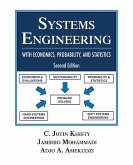Through detailed case studies of cities like London, Tokyo, and New York, readers discover how underground infrastructure addresses challenges of population growth, resource management, and environmental sustainability. The book's journey begins with ancient water management systems like Roman aqueducts and Persian qanats, establishing the historical foundation of underground engineering. It then transitions to modern utility networks, examining how water, sewage, electricity, and telecommunications systems have evolved to meet growing urban demands.
Technical concepts are made accessible through detailed diagrams and 3D modeling, while maintaining a balance between technical detail and practical application. Structured in three main sections covering historical development, current systems, and future challenges, the book serves as both a comprehensive reference and practical guide for urban planners, civil engineers, and architects.
It uniquely combines archaeological findings, municipal records, and contemporary engineering studies to present a holistic view of underground infrastructure. Special attention is given to emerging technologies like automated tunnel boring systems and smart infrastructure monitoring, making this an invaluable resource for understanding the future of urban development.
Dieser Download kann aus rechtlichen Gründen nur mit Rechnungsadresse in A, B, BG, CY, CZ, D, DK, EW, E, FIN, F, GR, H, IRL, I, LT, L, LR, M, NL, PL, P, R, S, SLO, SK ausgeliefert werden.









